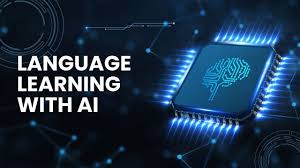As the world becomes more interconnected ai language learning, it is important to master multiple languages. AI is revolutionizing the language-learning process, providing unprecedented opportunities for advanced and novice learners. AI-powered software and tools are revolutionizing our approach to language acquisition. It is more efficient, personalized, engaging, and effective.

AI has the ability to create personalized learning experiences. Standardized curriculums make it difficult for traditional language courses to tailor to the individual needs and interests of students. AI-driven platforms have the ability to analyze a learner’s strengths, weaknesses and learning pace. This allows them to provide customized lessons that are targeted at specific areas for improvement. AI can for example identify a learner’s frequent grammatical issues and tailor exercises that target them. This increases the learning process efficiency.
AI technology can also be used to create immersive learning environments. AI applications, using speech-recognition and machine-learning techniques, can simulate real life conversations with native speakers. These tools allow users to receive instant feedback about their grammar, vocabulary, pronunciation and other aspects of speaking. This type of interactive learning helps build fluency and confidence – two important components in mastering any language.
AI can act as a link between language learners and vast resources. Google Translate or other AI-powered machine translation tools improve translation accuracy by using neural networks. These tools are not perfect but offer a beginning point for understanding and communicating. They enable learners to gain access to content that may be unavailable in their native tongue. As AI develops, it is expected that machine translation’s quality will improve, offering new possibilities for multilingual comprehension.
AI has practical applications but it also brings deeper insights to language patterns and structure. AI can reveal subtle nuances and patterns by analyzing huge amounts of data. These insights are used to develop teaching materials and improve language courses.
AI, despite the advances, is not without limitations. AI fails to grasp the human element involved in language learning – cultural nuances or emotional context, or idiomatic expressions. Teachers and other language experts can play a crucial role in translating and explaining these subtleties. It is possible that a hybrid solution, which combines AI and human expertise with AI, will offer the most efficient language learning solutions.
The integration AI in the language learning process is a huge step forward. It offers learners a more tailored and interactive experience, with a wealth of resources. AI will continue to grow in importance as the field of language education expands. This will lead to more linguistic opportunities and better global communication.
Leave a Reply